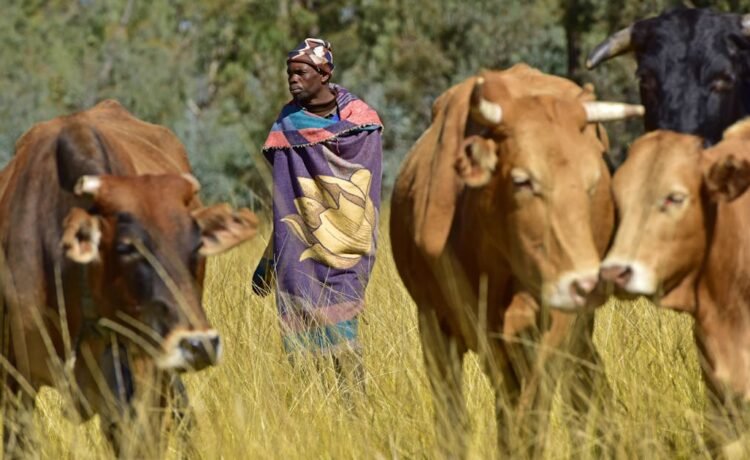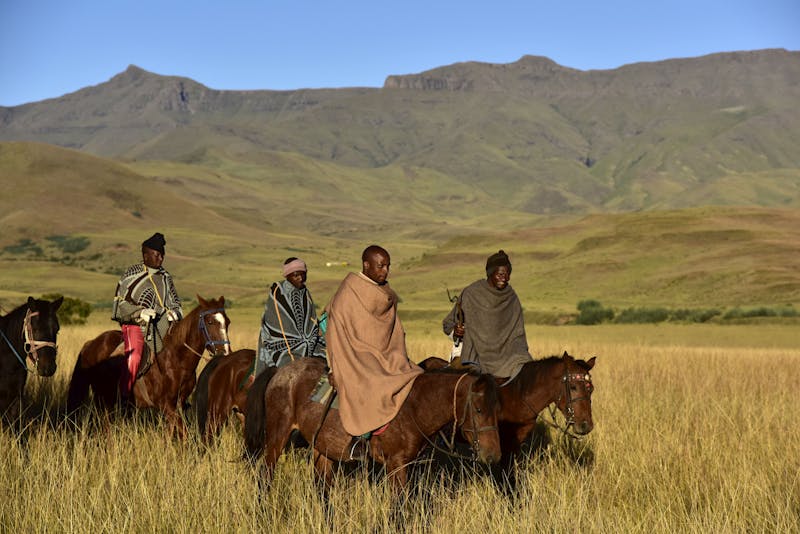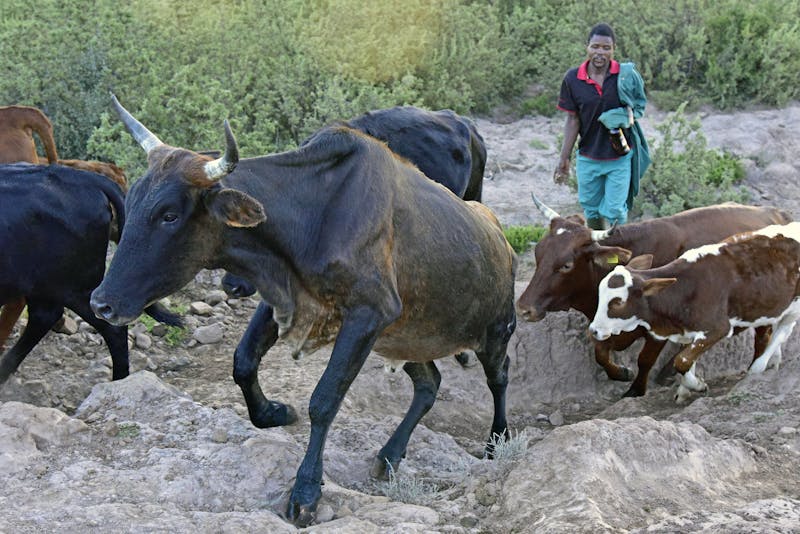Livestock herding and wildlife conservation are often perceived as conflicting pursuits, with the belief that one must come at the expense of the other. However, in South Africa, a fresh approach centered on Indigenous knowledge is challenging this perception.
Since 2019, CI Ventures has been invested in Meat Naturally, a promising start-up that is revolutionizing the way that local herders farm. Meat Naturally aims to revive traditional grazing practices that work with nature’s rhythms — rather than against them — to promote ecological balance across the landscape.
Conservation News sat down with Sarah Frazee, Meat Naturally’s CEO, and Mellony Spark, who manages CI Ventures’ investments in Africa. Together, they discussed building a future where animal husbandry and conservation work hand-in-hand.
Conservation News: How have pastoral communities in South Africa traditionally raised their livestock?
Sarah Frazee: For over 2,000 years, people have been herding cattle in Africa’s extensive rangeland systems. Africa’s pastoralists moved with wildlife populations based on rainfall and seasonal resource availability. This system allowed for periods of grazing followed by periods during which vegetation could recover from grazing pressure of both wildlife and cattle.
Mellony Spark: African ecosystems thrive through this approach — which we call rotational grazing — because it mimics the mass migrations of native wildlife like wildebeest or buffalo, which are constantly on the move as they follow seasonal rains across the savanna. It allows the land to rest, which helps maintain healthy ecosystems where native wildlife can flourish.
Do pastoral communities still practice rotational grazing today?
SF: Many South African communal farmers are deeply attached to the legacy of rotational grazing. The elders retain knowledge of the practice, and each of the main languages of the region —isiXhosa, seSotho, and isiZulu— have a word for rotational grazing.
However, in practice, rotational grazing has greatly diminished. Modern infrastructure like fencing has changed the way farmers do things. And even sending children to school, rather than out to look after the cattle, has had an impact. A lot of traditional knowledge has been lost as young people move to towns and cities and pursue other kinds of careers. Leaving behind the old ways has contributed to the degradation of rangelands, as cattle are left to graze continuously in the same areas.
Sotho horsemen in Eastern Cape, South Africa. © Trond Larsen
What happens to the cattle when they continuously graze in one area?
SF: Over the years, I’ve heard complaints from livestock buyers that the animals brought to market by communal farmers are malnourished and not in marketable condition. And there’s a simple reason for that — the cattle are eating degraded rangeland. So, not only is the continuous grazing harming the environment, it’s shutting communal farmers out of the market. We wanted to find a way to solve both problems at once.
And that’s where Meat Naturally comes in?
MS: Meat Naturally has reignited an interest in the old ways of doing things. In exchange for implementing rotational grazing on communal lands — and taking conservation actions like removing invasive plants and preventing runaway fires — Meat Naturally helps farmers meet the health and safety requirements needed to enter South Africa’s beef market. The country has strict regulations regarding food safety and animal welfare — which is a good thing — but it does present a barrier for small-scale farmers. In fact, even though smallholder farmers own around half of the country’s livestock, only 5 percent of the meat you find on supermarket shelves comes from them.
SF: Implementing rotational grazing requires a significant commitment from the community. Our training program requires herders to closely watch the animals — making sure they follow a grazing plan that allows vegetation to rest and recover. They also inspect the animals, making sure to look for any signs of disease. Eventually, the herders begin staying out in the field for the entire grazing season, allowing recovery of vegetation closer to the village for the cold winter months. We have a base station where the herders live during this time — a huge tent with solar panels so they have electricity.
What did the funding from CI Ventures help to accomplish?
MS: Communal farmers in South Africa have extremely limited options to sell their cattle. Outside of selling to each other or trading informally, Meat Naturally is one of the only avenues they have to reach formal markets — a gateway to bigger numbers of potential buyers and higher prices. Beginning in 2019, CI Ventures provided funding to help Meat Naturally increase frequency of auctions — which they organize and bring directly to the community. This was particularly important to bring more auctions during a shorter period of time, as the farmer desire for sales is during a brief three-month period when grass is most nutritious and cattle are at their fattest.
A herder with his cattle in Eastern Cape, South Africa. © Trond Larsen
Are these practices transferrable to other places in Africa?
SF: South Africa was the perfect place to launch Meat Naturally. It’s a country with a positive environmental ethic, that has voluntarily set aside huge swaths of land for conservation. However, during my decades of working on conservation here, I began to see a literal gap that needed to be filled. Very few organizations were working to conserve nature in the space between those formally protected lands. I had a vision that we could work shoulder-to-shoulder with pastoral communities to revive traditional grazing practices — and link protection and restoration of the savanna with livestock production.
Additionally, this is a country with a tremendous amount of wealth disparity, and nearly 30 million people living below the poverty line. These two factors offered an opportunity to tackle both problems at once, and hopefully create a ripple effect that benefits both society and the environment. Right now, we’re actually offering technical support for programs in Botswana, Mozambique, Lesotho and Zambia.
So, what is next for this partnership?
SF: The next phase of our work is centered around climate action. When we restore degraded landscapes, we minimize soil erosion and increase biodiversity, all of which fuels the ability of these ecosystems to absorb and store climate-warming carbon — which is critical for tackling climate change. Meat Naturally is working with a commercial investor which we were able to secure on the basis of our track record with CI Ventures. Now we are able to further help farmers protect their rangelands through the sale of carbon credits — in short, investments that reduce carbon emissions by providing financial incentives to protect nature. We are hoping we may be able to further expand this work into areas important for Conservation International with CI Ventures support.
MS: We couldn’t have written a better textbook example of a successful CI Ventures investment. Sarah came to us with a strong grounding in what she wanted to accomplish — for both people and nature — and how she intended to make a profit through this model. With just a little bit of guidance, we were able to firm up her business model. And now, with her loan fully repaid, and new ideas on the horizon, she is poised to see it flourish across many more frontiers in Southern Africa. I can’t wait to see what she does next.
More stories from CI Ventures investees:
Will McCarry is a staff writer at Conservation International. Want to read more stories like this? Sign up for email updates. Also, please consider supporting our critical work.










Recent Comments